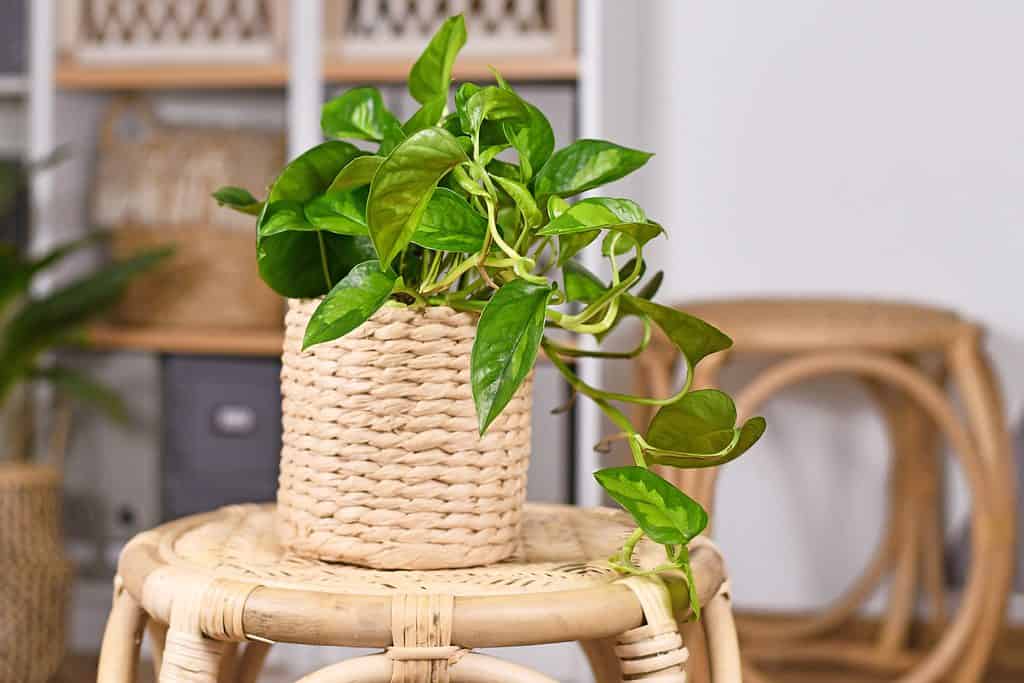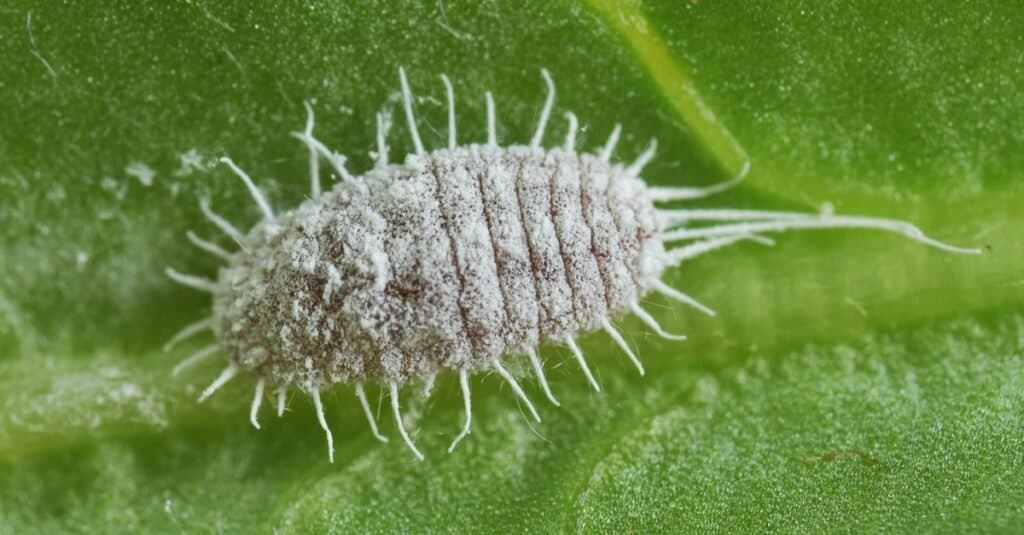Pothos are excellent houseplants that are loved by plant collectors around the world for their ease of growth as well as their wide range of varieties. There are many different types of variegated, or patterned, pothos varieties out there. From the marble queen pothos to the elusive harlequin pothos, there are so many different color patterns that one can find when it comes to pothos.
But what if you want a pothos that has subtle variegation in its leaves, as well as a tropical, deep green hue? This is where the emerald pothos and the global green pothos come. Both are stunning variegated pothos without any white or cream coloration that maintain their vibrant green tropical hues. Unfortunately, these two varieties often get mistaken for one another, and it makes sense why. To the untrained eye, these two varieties look almost identical.
In this guide, we’ll take a look at the key differences between the global green pothos and the emerald pothos, so you can make a better decision about which plant is right for you; or both!
Comparing Emerald Pothos vs. Global Green
| Emerald Pothos | Global Green | |
|---|---|---|
| Classification | Epipremnum aureum ‘Emerald’ | Epipremnum aureum ‘Global Green’ |
| Alternative Names | Devil’s Ivy, Devil’s Vine | Devil’s Ivy, Devil’s Vine |
| Origin | South Pacific Islands | South Pacific Islands |
| Description | A variety of pothos that has unique dark interior variegation against lighter-green leaves. | A variety of pothos that has very mild variegation of dark green and mid-green, as well as occasional cream tones. |
| Uses | Ornamental houseplant | Ornamental houseplant |
| Growth Tips | Ensure that your emerald pothos only receives a good watering once the first inch or two of its soil has dried out, as overwatering can lead to root rot. | Place this variety of pothos in a sunny spot, as lack of sunlight with turn it solid green. |
| Interesting Features | Unlike most variegated varieties of pothos, the emerald pothos has a darker interior against a lighter exterior leaf. | Unlike many other varieties of variegated pothos, this cultivar has very subtle color patterns. |
The Key Differences Between Emerald Pothos and Global Green
It’s very obvious why these two pothos species are confused with one another. Many nurseries and online shops will even mislabel the global green pothos for the emerald pothos. So what’s the deal? Is there actually any real difference between these two pothos cultivars? Have we all just been lied to in order to sell plants?
The answer to that last question is “no.” However, these plants are identical in terms of species. They are both varieties or cultivars of Epipremnum aureum. Their care requirements and growth needs are identical. They are also both variegation varieties of pothos. The only real difference comes down to the variegation in their leaves. The emerald pothos boasts light lime-green leaves that have darker-green variegation in the center of the leaves. The global green pothos has darker-green leaves with variegation that is a lighter lime-green hue in the center of the leaves.
Both plants’ variegation will vary from plant to plant and from leaf to leaf. Other than the above key difference, these plants are virtually the same. If you’re looking for one variety over the other, try to carefully inspect its foliage. If the large brushstrokes or splashes of color are lighter than the surrounding leaf, it is likely a global green pothos. If the large brushstrokes or splashes of color are darker than the surrounding leaf, it is likely an emerald pothos.

The global green pothos (pictured) is an excellent pothos variety.
©Firn/Shutterstock.com
Emerald Pothos vs. Global Green: Classification
The emerald pothos is classified as Epipremnum aureum ‘Emerald’. The global green pothos is classified as Epipremnum aureum ‘Global Green’. Both varieties are part of the same species. They are both part of the Araceae family of plants. They are closely related to tropical plants like monsteras and philodendrons.
Emerald Pothos vs. Global Green: Description
Emerald pothos plants are an unusual cultivar of the pothos species. It’s easy to confuse global green and jade pothos with emerald pothos. Green-on-green variegation can be found on both the emerald and global green pothos. This mild variegation might make it difficult to tell the two pothos apart. Take a careful look at the leaf’s core. Emerald pothos features lighter green borders and dark green cores. The global green will display the opposite. The emerald green pothos has been in the plant trade for some time, but it can be a bit difficult to find at local nurseries.
The bright and dark green leaves of the global green pothos form a magnificent, gorgeous variegated vining plant. Once established, this unusual plant is easy to grow and take care of. To keep its attractiveness and grow more leaves, it thrives in direct and strong light. If trained to climb, the global green pothos can trail up to 10 feet long in ideal indoor circumstances. Because it can remove gaseous contaminants like formaldehyde from the air, the golden green pothos is especially well suited for interior environments. This cultivar is famously difficult to locate because it is a newcomer to the plant industry.
Emerald Pothos vs. Global Green: Uses
Both of these varieties are primarily used as indoor houseplants.
Emerald Pothos vs. Global Green: Origin
All pothos plants are native to the South Pacific Islands. They have since been naturalized in tropical regions around the world. The emerald pothos, however, is a real mystery in terms of its origin. There is very little information as well as conflicting information about who initially bred this cultivar. Its origins remain a mystery, but you can still find them sold online with a little bit of research.
The origins of the global green pothos are similarly obscure. It’s not entirely clear who came up with this colorful variation. Costa Farms has indicated that it has controlled the patent for this fresh cultivar in the U.S. since around 2021. Other than that, not much is known about the origins of this magnificent cultivar.
Emerald Pothos vs. Global Green: How to Grow
Both the emerald pothos and the global green pothos have identical care requirements. As both of these plants are variegated varieties, ensure that they are not kept in low or no light. Doing so will cause these plants’ variegation patterns to disappear. Both of these varieties also have similar growth rates and can easily grow a foot long in a year.
While it can survive in lower light levels, emerald and global green pothos need very bright indirect sunlight for a minimum of six hours per day. If the light levels are low for an extended length of time, the leaves will be smaller and the vines will get leggy. To protect your pothos from the sun’s direct rays, place it close to an east or north-facing window or position it back from a south or west-facing window. The leaves will scorch or get discolored under direct sunlight. They will be quite content with artificial light as long as it is available for at least eight hours each day.
Your pothos will be fine with the typical household temperature ranges. But, if they are exposed to temperatures below 55 degrees F, they will stop growing. These tropical indoor vines can perish if exposed to freezing temperatures for an extended period of time. Above 90 degrees F temperatures can rapidly cause the soil to dry up, necessitating a change in your watering schedule. In order to keep away problem causers like fungus and pests, it might be beneficial to add some type of fan or air purifier near your plant for air circulation.
When the plant’s soil is completely dry on the top layer, give it some water. During the growth season, water more often; in the winter, less often. If you are unsure of when to add extra water, it is advisable to avoid doing so. Bigger pothos can go longer without water, but younger, less established plants require regular watering until their roots are well set. Be careful to deeply and slowly water your global green or emerald pothos plant. Water should be applied uniformly over the whole root system. Although pothos are not sensitive to tap water, you can drain the soil by washing off salts and minerals that may have built up in the soil every few months. Run water through the soil for a few minutes to do this. Emerald pothos, like every other variety of the pothos species, will do best in humidity levels over 45% to 50%, although it can also survive in typical home humidity.
While pothos don’t have a particular preference for soil, the emerald pothos and the global green pothos thrive in loose, light, nutrient-rich potting soil. To prevent root rot, choose a soil media that can hold moisture but also allows for sufficient drainage. The majority of pre-mixed soils will work. Avoid soils that contain moisture-retaining crystals and make sure there is a sufficient amount of organic matter, such as coconut coir, peat moss, or chopped leaves.
Regular fertilization is also beneficial for these pothos varieties. Throughout the growing season, use a weak solution of a complete liquid fertilizer every two weeks. Winter is not the time to fertilize.

Mealybugs (pictured) are one type of pest that can damage pothos plants.
©AjayTvm/Shutterstock.com
Emerald Pothos vs. Global Green: Protections and Conservation
Neither the emerald pothos nor the global green pothos is protected by any government entity. Both varieties of this species are not considered endangered. The pothos species as a whole, though, is considered invasive in different parts of the world where it has been naturalized, such as Hawaii, the Galapagos, and Puerto Rico.
Emerald Pothos vs. Global Green: Special Features
Both of these pothos varieties are toxic to humans and pets, so be sure to keep them out of reach or possibly outdoors if you have furry friends and little humans running around.
Both of these varieties are unique in that their variegation is green. Most variegated pothos plants, such as the marble queen pothos, have creamy white or yellow variegation on their leaves. If you’re looking for pothos varieties that can offer a more tropical-looking vibe to your space, the emerald pothos and the global green pothos are excellent choices.
Both of these varieties are trailing or vining plants, but they lack the suckers of true vines that keep them in place along walls and trellises. To ensure your plant can trail, use a moss pole or similar structure to wrap your pothos around.
Both the emerald green pothos and the global green pothos are excellent pothos varieties worthy of any tropical plant collection. If you’re looking for rarer cultivars that boast mild and vibrant variegation, either of these pothos would be perfect for you.
Want to learn more about the eye-catching pothos houseplant? Check out our in-depth guide to everything you need to know about pothos!
The photo featured at the top of this post is ©
FAQs (Frequently Asked Questions)
Are there similarities between global green and emerald pothos?
Both varieties have a similar, vibrant combination of green, thick leaves.
Are global green and emerald pothos the same plant?
No. These two plants are part of the same species, but they are different cultivars.
Is the emerald pothos hard to find?
The emerald pothos is one of the rarest cultivars of pothos available. The global green pothos is a new cultivar, and it is similarly difficult to find.
Thank you for reading! Have some feedback for us? Contact the AZ Animals editorial team.






